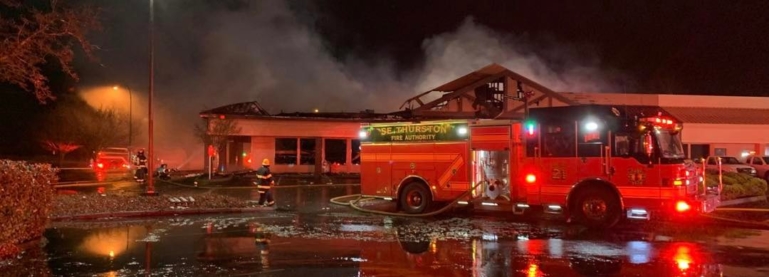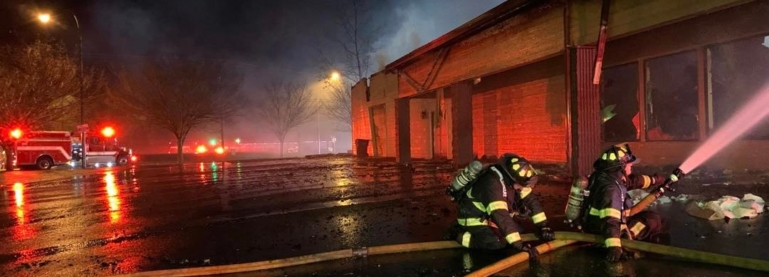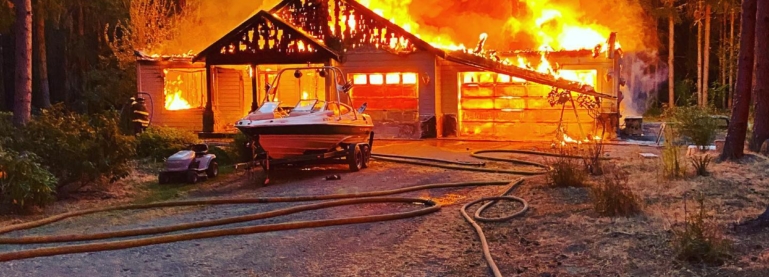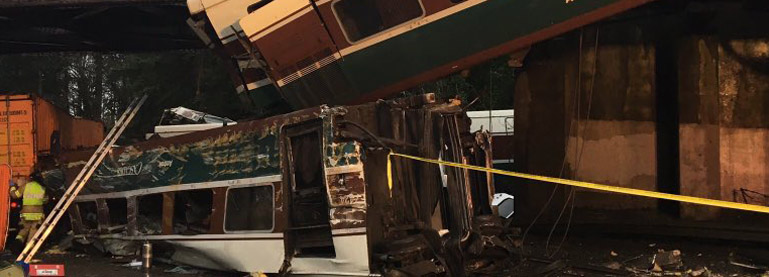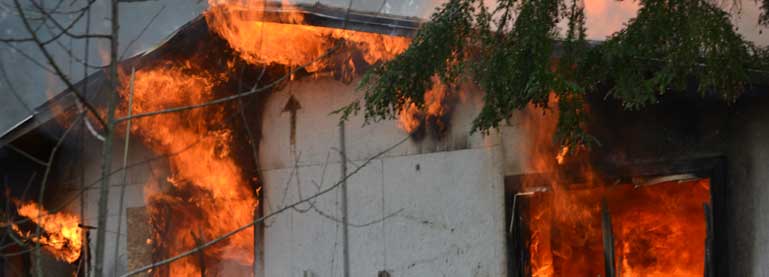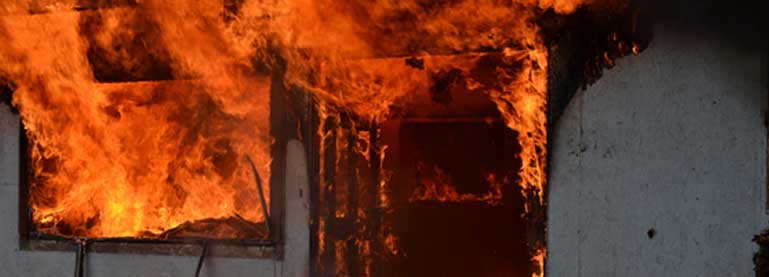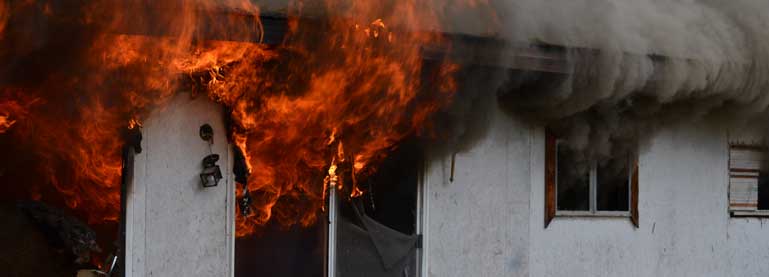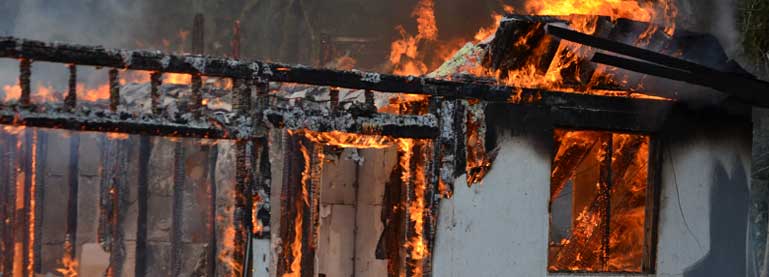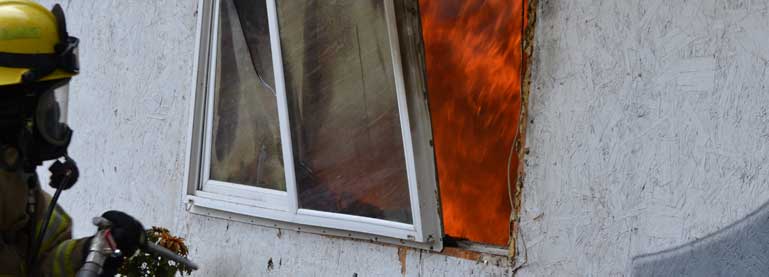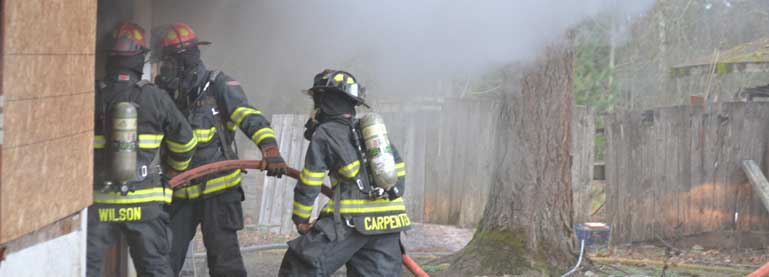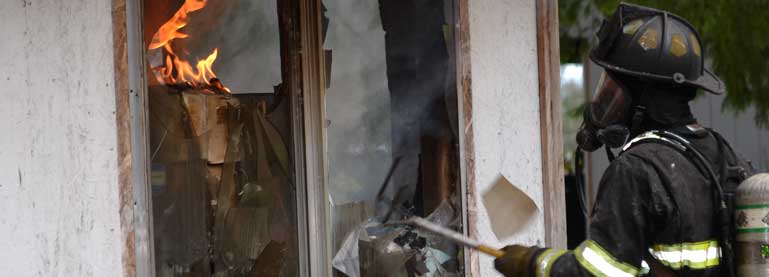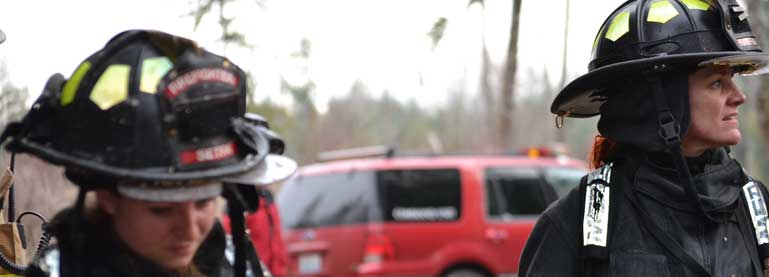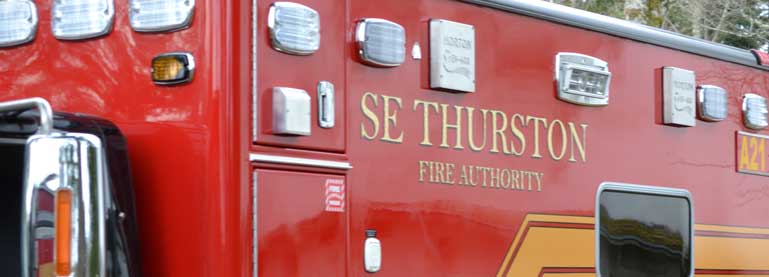Most fatal fires occur in residential buildings between 11 p.m. and 6 a.m. when occupants are more likely to be asleep.
Washington State Law requires that smoke detection devices shall be installed inside all dwelling units occupied by persons other than the owner on and after December 31, 1981; or built or manufactured in this state after December 31, 1980. Read the entire RCW here.
Types of Smoke Detectors
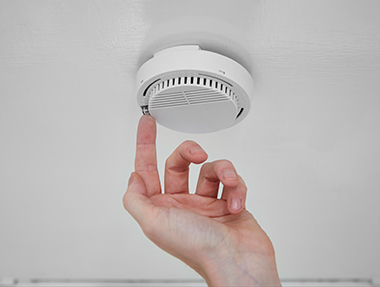 Ionization detectors
Ionization detectors
Ionization detectors contain radioactive material that ionizes the air, making an electrical path. When smoke enters, the smoke molecules attach themselves to the ions. The change in electric current flow triggers the alarm. The radioactive material is called americium. It’s a radioactive metallic element produced by bombardment of plutonium with high energy neutrons. The amount is very small and not harmful.
Photo-electric detectors
These type of detectors contain a light source (usually a bulb) and a photocell, which is activated by light. Light from the bulb reflects off the smoke particles and is directed towards the photocell. The photocell then is activated to trigger the alarm.
Choosing a Smoke Detector
When choosing a smoke detector, there are several things to consider. Think about which areas of the house you want to protect, where fire would be most dangerous, and how many you will need.
The safest bet is to have both kinds or a combination detector with a battery back up. Be sure to check for a testing laboratory label on the detector. It means that samples of that particular model have been tested under operating conditions. Check to see if it is easy to maintain and clean. Be sure bulbs and batteries are easy to purchase and convenient to install.
Installation
Placement
The placement of smoke detectors is very important. Smoke detectors should be placed:
- Every bedroom should have a smoke detector. It’s also recommended to put one in living rooms and hallways.
- In each hallway (2 if longer than 30 feet)
- On every level of the home, in or near living areas, including the basement
- At the top of each stairwell
- Smoke detectors are NOT recommended for kitchens
Mounting
- You can mount many detectors by yourself, but those connected to your household wiring should have their own separate circuit and be installed by a professional electrician. If you mount your detector on the ceiling, be sure to keep it at least 18 inches away from dead air space near walls and corners.
- If you mount it on the wall, place it six to 12 inches below the ceiling and away from corners.
- Be sure to keep the detector away from fireplaces and wood stoves to avoid false alarms.
- Keep them high because smoke rises.
Maintenance
- Keeping smoke detectors in good condition is easy. Always follow the manufacturer’s instructions (be sure to replace the batteries every year or as needed). Most models will make a chirping, popping or beeping sound when the battery is losing its charge. When this sound is heard, install a fresh battery, preferably an alkaline type.
- Replace bulbs every three years or as needed (Keep extras handy).
- Check your detector if you’ve been away from home.
- Test smoke detectors at least once a month. Nearly all smoke detectors have a test button – simply push the test button and the alarm will sound.
- Never paint a smoke detector as it will hamper its function.
- Clean smoke detector face and grillwork at least once a year. Dust, grease, and other particles in the air can build up over time and decrease the sensitivity of a smoke detector. The best way to clean a smoke detector is with a vacuum hose.
- Replace the entire smoke detector at least once every 10 years. Smoke detectors do wear out over time.
- Hard-wired smoke detectors should be tested, cleaned, and replaced just as often as non-wired smoke detectors.
Carbon Monoxide Is Deadly
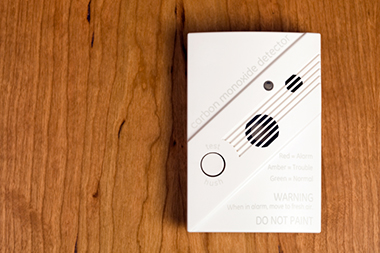 RCW 19.27.530
RCW 19.27.530
By July 1, 2010, the building code council shall adopt rules requiring that all buildings classified as residential occupancies, as defined in the state building code in chapter 51-54 WAC, but excluding owner-occupied single-family residences legally occupied before July 26, 2009, be equipped with carbon monoxide alarms.
Click here to read the entire RCW.
You can’t see or smell carbon monoxide, but at high levels it can kill a person in minutes. Carbon monoxide (CO) is produced whenever any fuel such as gas, oil, kerosene, wood, or charcoal is burned.
If appliances that burn fuel are maintained and used properly, the amount of CO produced is usually not hazardous. However, if appliances are not working properly or are used incorrectly, dangerous levels of CO can result.
Hundreds of people die accidentally every year from CO poisoning caused by malfunctioning or improperly used fuel-burning appliances.
Symptoms of Carbon Monoxide Poisoning
Low to moderate exposure levels can produce the following symptoms. Prolonged exposure may have longer term effects on your health.
- Mild to Severe headaches
- Dizziness
- Mental confusion
- Nausea
- Fainting
- Shortness of breath
What To Do if Exposed
Get fresh air immediately. Open doors and windows, turn off combustion appliances and leave the house.
Go to an emergency room and tell the physician you suspect CO poisoning. If CO poisoning has occurred, it can often be diagnosed by a blood test done soon after exposure.
Prevent CO Exposure
Prevention is the best defense against CO poisoning. If there is no exposure – there is no danger.
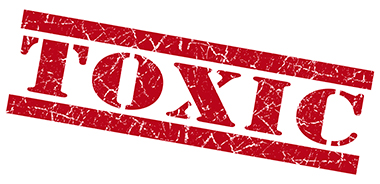 If there are fuel-burning appliances in your home install carbon monoxide detectors.
If there are fuel-burning appliances in your home install carbon monoxide detectors.- Properly maintain any fuel-burning appliances per the manufacturers instructions.
- Keep gas generators outdoors and away from open windows and doors.
- Never run a generator in the home, garage, or crawlspace. Opening doors and windows or using fans will NOT prevent CO build-up in the home.
- Never burn charcoal in homes, tents, vehicles, or garages.
- Never leave a car running in a garage even with the garage door open.
- Never install or service combustion appliances without proper knowledge, skills, and tools.
- Never use a gas range, oven, or dryer for heating.
- Never put foil on bottom of a gas oven because it interferes with combustion.
- Never operate an un-vented gas-burning appliance in a closed room or in a room in which you are sleeping.

